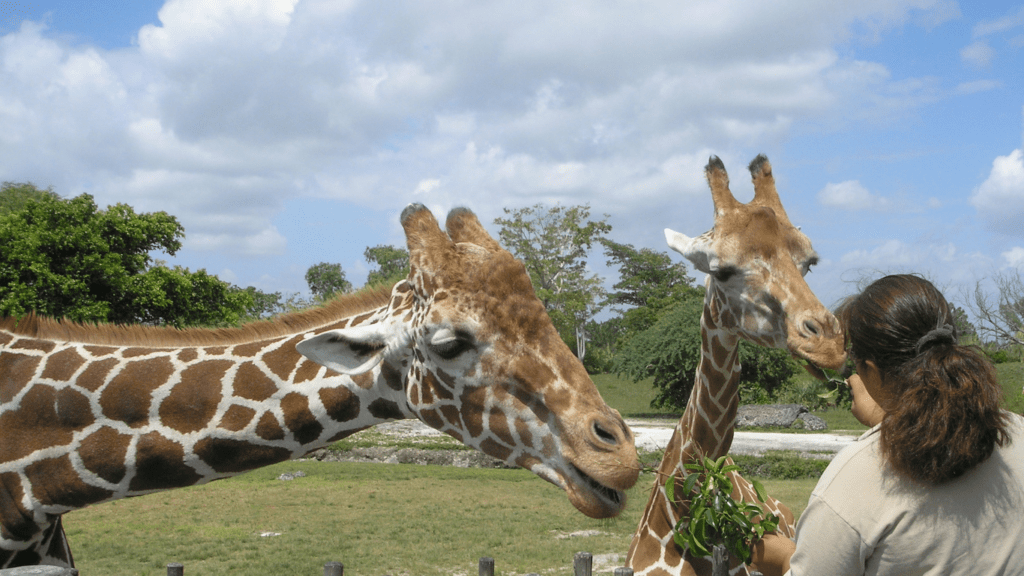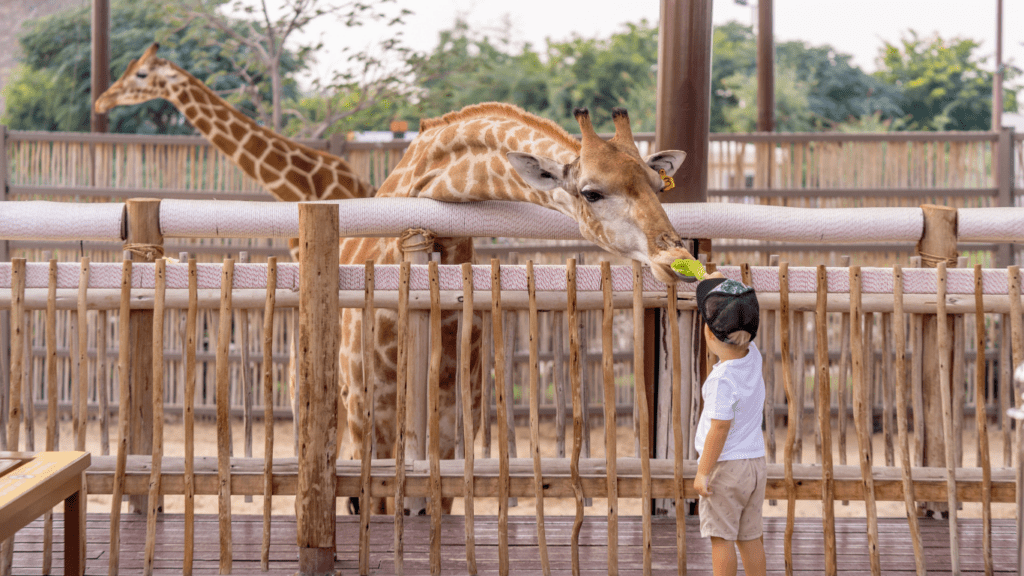Strolling through city streets, one might not expect to encounter much wildlife beyond the occasional pigeon or squirrel. However, as urban areas expand, the importance of creating wildlife habitats within city spaces becomes increasingly evident. In my exploration of this topic, I’ve discovered innovative ways to harmonize urban development with the needs of local wildlife populations.
From rooftop gardens to pocket parks, urban planners are reimagining city landscapes to accommodate a variety of flora and fauna. As I delve into the strategies and benefits of integrating wildlife habitats into urban environments, I’ll shed light on how these initiatives not only support biodiversity but also enhance the overall quality of life for city dwellers. Join me on this journey to uncover the transformative power of creating wildlife-friendly spaces in the heart of our bustling cities.
The Importance of Wildlife Habitats in Urban Areas
Creating wildlife habitats in urban areas is crucial for preserving biodiversity and enhancing the quality of life for both wildlife and city residents. Let’s delve into the specific benefits that these habitats offer.
Benefits to Biodiversity
Integrating wildlife habitats into urban spaces provides a sanctuary for various species, allowing them to thrive in environments that would otherwise be devoid of natural habitats. These habitats act as refuges for animals, supporting diverse ecosystems even within concrete jungles. By creating corridors and green spaces, urban areas can connect fragmented habitats, facilitating the movement of wildlife and promoting genetic diversity among populations.
Benefits to Human Well-being
Wildlife habitats in urban settings offer numerous benefits to human well-being. They provide opportunities for city dwellers to connect with nature, fostering a sense of tranquility and reducing stress levels. These green spaces contribute to improved air quality, mitigating pollution and enhancing the overall environmental health of the city. Additionally, wildlife habitats create educational opportunities for residents to learn about local flora and fauna, promoting environmental awareness and a sense of stewardship towards the natural world.
Key Components of Urban Wildlife Habitats
When designing urban wildlife habitats, it’s crucial to consider specific elements that cater to the diverse needs of wildlife, promoting biodiversity and enhancing the urban ecosystem. Incorporating the following key components ensures that these spaces are not only attractive to wildlife but also sustainable in the long run.
Native Plants and Trees
Native plants and trees play a vital role in creating a thriving urban wildlife habitat. These vegetation types are adapted to the local environment, providing food and shelter for native wildlife species. Planting a variety of native plants and trees such as milkweed for butterflies, oak trees for birds, and wildflowers for bees, ensures a diverse habitat that supports a wide range of wildlife.
Water Sources
Water sources are essential for maintaining a healthy urban wildlife habitat. Including ponds, bird baths, or even small fountains provides wildlife with a crucial resource for drinking, bathing, and breeding. Water sources also attract a variety of species, contributing to the overall biodiversity of the habitat. It’s important to ensure that water sources are regularly maintained to prevent stagnation and promote a healthy ecosystem.
Shelter and Nesting Spaces
Shelter and nesting spaces are critical components of urban wildlife habitats, providing animals with safe havens to rest, raise offspring, and seek protection from harsh weather. Incorporating birdhouses, bat boxes, and brush piles create opportunities for wildlife to nest and take shelter, contributing to the overall vitality of the habitat. By including a variety of shelter options, urban wildlife can find suitable places to thrive in the midst of the cityscape.
Challenges in Creating Urban Wildlife Habitats
When considering the creation of wildlife habitats in urban areas, several challenges need to be addressed to ensure the successful integration of these spaces.
- Space Limitations
In urban environments, space is a premium commodity. Finding adequate land to designate as wildlife habitats within cities can be a significant challenge. It’s crucial to optimize the available space efficiently to create habitats that can support a diverse range of species. - Human-Wildlife Conflicts
Urban settings often lead to interactions between humans and wildlife, resulting in conflicts. Balancing the needs of wildlife with the safety and well-being of city residents is essential. Strategies such as habitat modification, wildlife corridors, and public education can help mitigate these conflicts and create harmonious coexistence.
Pollution and Urban Sprawl
Pollution and urban sprawl pose direct threats to wildlife habitats in cities. Contamination of air, water, and soil can harm plant and animal species, impacting their health and survival. Additionally, rapid urban development can lead to habitat loss and fragmentation, further endangering urban wildlife populations. Implementing sustainable practices and green infrastructure can mitigate the adverse effects of pollution and urban sprawl on wildlife habitats.
Successful Examples of Urban Wildlife Habitats
In my exploration of successful urban wildlife habitats, I’ve come across inspiring case studies that showcase innovative approaches to incorporating nature into city spaces.
Case Study: New York City’s Green Roofs
In New York City, green roofs have emerged as a vital component of urban wildlife habitats. These vegetated rooftops not only help reduce energy consumption and lower urban heat island effects but also provide essential habitats for birds, insects, and plants. The High Line, a public park built on a historic freight rail line elevated above the streets on Manhattan’s West Side, is a prime example of how green roofs can transform urban environments into thriving wildlife sanctuaries. By integrating native plant species, green roofs in NYC have become vital green spaces that support biodiversity and offer a respite for both wildlife and city dwellers.
Case Study: London’s Wildlife Corridors
London has been at the forefront of creating wildlife corridors to connect fragmented habitats and enhance urban biodiversity. By establishing green corridors like the Bee Lines project, which aims to create a network of wildflower-rich habitats for pollinators across the city, London has demonstrated a commitment to supporting wildlife in urban settings. These corridors not only provide safe passages for animals to navigate the city but also contribute to the conservation of endangered species and promote genetic diversity within urban ecosystems. London’s approach to wildlife corridors serves as a model for integrating nature into the fabric of the city to create sustainable and resilient urban environments.
How to Get Involved
As someone passionate about wildlife conservation, I’m excited to share how you can actively participate in creating wildlife habitats in city spaces. Getting involved in initiatives aimed at supporting urban biodiversity not only enriches your connection with nature but also contributes to the well-being of both wildlife and city dwellers.
Volunteer Opportunities
Volunteering is a fantastic way to make a tangible impact on urban wildlife habitats. Joining local conservation groups or community projects allows you to participate in habitat restoration, maintenance, and monitoring efforts. By dedicating your time and energy, you can help create sustainable environments for various species to thrive amidst the urban landscape.
Educational Programs
Engaging in educational programs related to urban wildlife habitats can deepen your understanding of the essential role these spaces play in supporting biodiversity. Attend workshops, seminars, or guided tours organized by environmental organizations to learn about native flora and fauna, habitat design principles, and strategies for coexisting with urban wildlife. Educating yourself empowers you to become a proactive advocate for creating and preserving wildlife-friendly spaces in your city.

 Joseph Hood is an integral part of the project team, specializing in renewable energy and sustainable technology. His expertise in solar energy systems and energy efficiency plays a crucial role in shaping the project's goals and initiatives. Joseph actively collaborates with fellow team members to explore innovative solutions for reducing carbon footprints and promoting cleaner energy sources. His enthusiasm for public education ensures that community members are informed about the benefits of renewable energy, reinforcing the project's mission to create a more sustainable future.
Joseph Hood is an integral part of the project team, specializing in renewable energy and sustainable technology. His expertise in solar energy systems and energy efficiency plays a crucial role in shaping the project's goals and initiatives. Joseph actively collaborates with fellow team members to explore innovative solutions for reducing carbon footprints and promoting cleaner energy sources. His enthusiasm for public education ensures that community members are informed about the benefits of renewable energy, reinforcing the project's mission to create a more sustainable future.